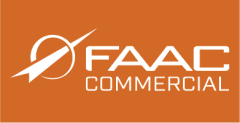Driving Change with Low or No Emission Grants and Investment in Training
Published

According to CALSTART’s annual report on zero-emission buses there are now at least 5,480 full-size ZEBs (zero-emission buses) in the United States, a 66 percent increase since 2021. That includes a 75 percent increase in fuel-cell electric buses in 2023 alone (according to an analysis by Hydrogen Central)—excellent news for the many communities enjoying lower-emission public transit fleets.
This leap in low-emission transit bus adoption has no doubt been spurred on by the Federal Transit Administration (FTA) Low or No Emission Grant Program. The so-called “Low-No” grant program aims to fund state and local agencies looking to make the shift to zero-emission and low-emission transit buses. The FTA awarded roughly $1.7 billion in Low-No Grants in 2023—driving so much interest in low- and zero-emission buses that manufacturers reportedly struggled to keep pace with orders.
Nonetheless, many agencies still seem to be hesitant to apply. Gamaliel Anguiano is the transit director for Santa Maria Regional Transit (SMRT) in Santa Maria, CA. Under Anguiano’s leadership, SMRT was awarded a $6.6 million Low-No Grant, covering the cost of six new Gillig zero-emission buses and a FAAC MB-2000 training simulator (the Low-No program mandates that at least 5 percent of the grant go toward investments in workforce development).
“In the early years of Low-No,” Anguiano notes, “landing a Low-No Grant felt very elusive and difficult. But as a result of the relatively recent major infusion of additional Low-No funds, transit agencies should strongly consider revisiting this grant as a way to accelerate their transition to new technology.” The end of the Low-No Grant program application season is quickly approaching—the deadline this year is April 25—so agencies are urged to act quickly.
Accelerating Electric Bus Adoption
Anguiano explains that the current structure of the Low-No Program significantly reduces the amount of work and risk associated with getting federal funding to support the transition to a zero-emission public transit system.
“Low-No is really a transit system’s highway to adopting the future sooner. The traditional request for proposal process [RFP] requires a transit agency to absolutely know what they want and need in advance,” Anguiano says. “As a transit manager, I can design new routes all day long. But, I’m not capable of knowing all the transit technology and training options that are available out there. So, for me to write an RFP for something that I don’t know exists or exists in the way I would desire can be quite challenging. I would run into the barrier of either being too narrow in my design or too broad in my design.”
But the Low-No Program includes a partnership provision, allowing for “named” or “select” partners. These are specific companies an agency designates in advance to help execute their transition plan. If a select partner is specified in advance, then the project will automatically satisfy the federal government’s requirement for a competitive procurement process.
“You can find a solution that is already time proven, time tested, and identify them as a partner. Award of the grant is then also the award of the contract. Low-No really facilitated our opportunity to onboard this equipment in a way that might have been difficult through a traditional RFP…Outside of the Low-No program, this is a much slower process, one that delays the absolutely beneficial deployment of new technologies and training.”
The Next Step: Investing in Simulation Training
Every transit agency in the country has struggled to find, train, and retain good workers since the pandemic. For Anguiano and SMRT, simulation-based training was an especially good fit now.
As Anguiano explains, “We were looking into all sorts of additional and supplemental training” to fulfill the workforce development requirements of the Low-No grant program. “The challenge is that we know there is going to be turnover. With many training solutions, when there’s turnover in the staff that received that training, that knowledge would go with them. Meanwhile, the new hires would not have the benefit of a direct source of training, but rather secondhand information. The FAAC simulator provides a tangible and long-term benefit for our organization. Any new hire can now reap the benefits of this equipment investment.”
But there are also intangible benefits of the Low-No grant program, and these may be the greatest benefits of all. According to Anguiano, “Between the virtual bus training simulator and the new EV buses, we believe that there’s a ‘halo effect’ beyond the immediate direct benefits of having these better technologies. That is when community members see the seriousness of our investment both in public transit and the training of our workforce, that catches their attention. It will spill over into this cascading effect of more improvements, more usage, and more interest in transit.”

